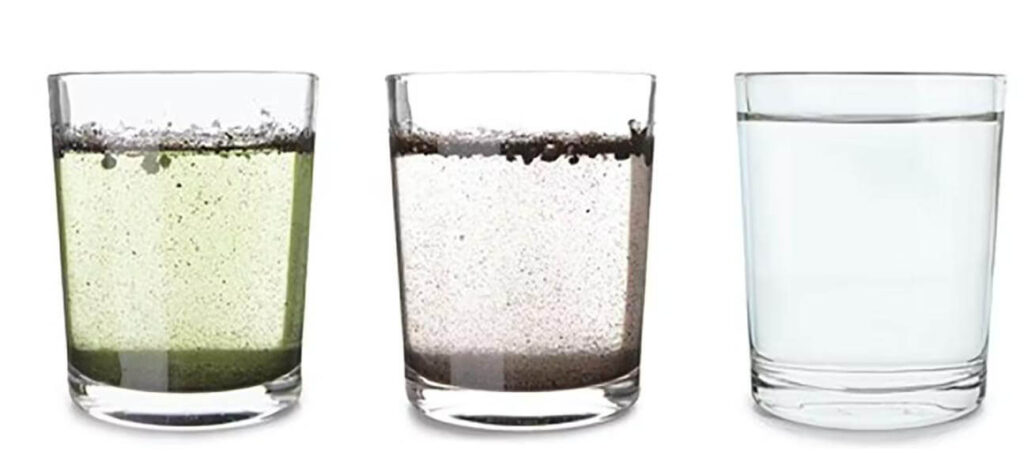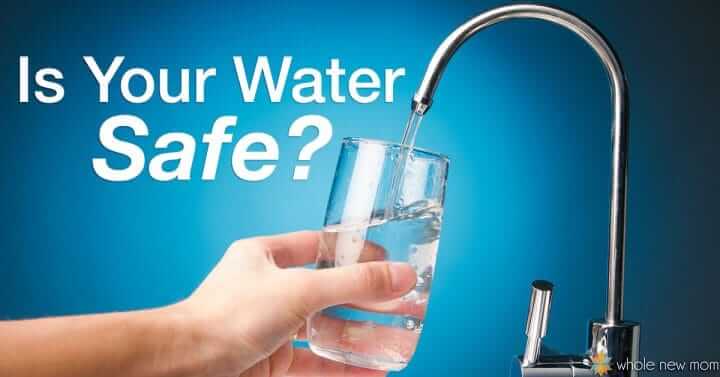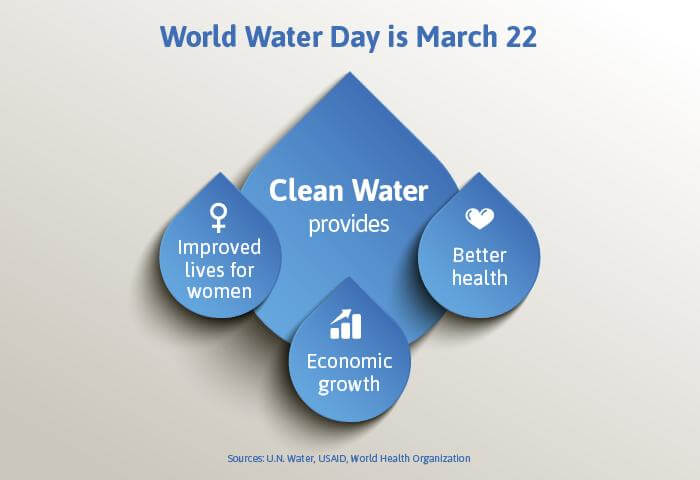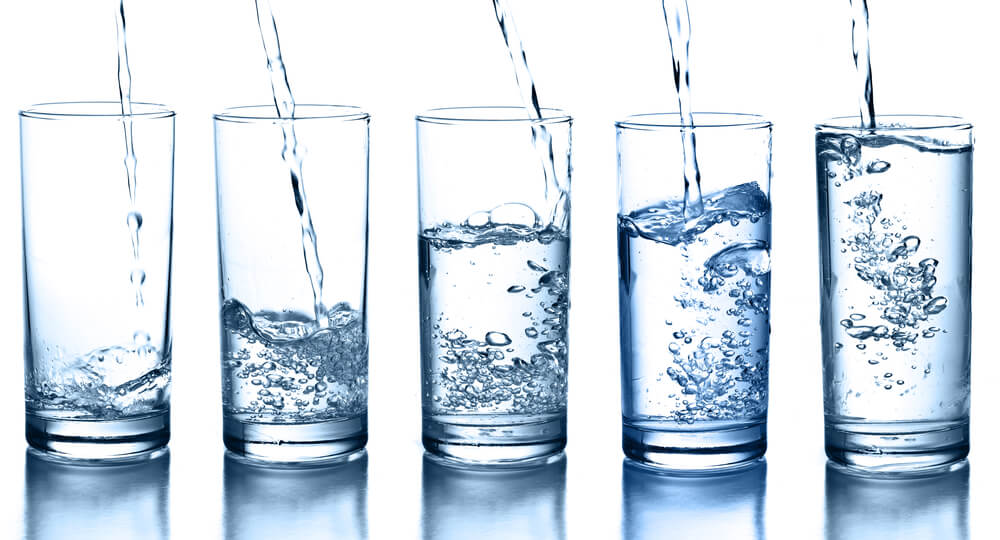Water is a fundamental necessity for life. However, not all water is created equal. The quality, taste, and safety of water can vary significantly depending on whether it is filtered or unfiltered. This article aims to explore the main differences between unfiltered and filtered water.
1.Unfiltered Water
Unfiltered water is water in its most natural state. It comes directly from the source, whether that’s a well, a spring, or a municipal water supply, without undergoing any significant treatment processes. Unfiltered water can contain a variety of substances, including minerals, microorganisms, and potential contaminants. The composition of unfiltered water can vary greatly depending on the source. For example, well water might contain high levels of minerals, while municipal water might contain chlorine and other chemicals used in water treatment.
2.Filtered Water
Filtered water, on the other hand, has been processed to remove impurities. The filtration process can involve a variety of methods, including activated carbon, reverse osmosis, and distillation. These methods can remove a wide range of substances, from large particles to microscopic organisms and chemical contaminants. The result is water that is typically cleaner, safer, and often better tasting than unfiltered water.

Comparison of Unfiltered and Filtered Water
| Unfiltered Water | Filtered Water | |
|---|---|---|
| Source | Natural sources (wells, springs, municipal supplies) | Any water source, processed through a filtration system |
| Composition | Can contain minerals, microorganisms, and potential contaminants | Impurities removed, including particles, organisms, and chemicals |
| Safety | Varies depending on source and potential contaminants | Generally safer due to removal of contaminants |
| Taste | Varies depending on source and composition | Often improved due to removal of certain substances |
In conclusion, the main differences between unfiltered and filtered water lie in their source, composition, safety, and taste. While unfiltered water can be more “natural,” it also carries the risk of containing harmful substances. Filtered water, while requiring processing, generally provides a safer and often more pleasant alternative. The choice between unfiltered and filtered water will depend on a variety of factors, including the quality of the local water supply, personal taste preferences, and health considerations.
How does the filtration process affect the taste of water?
The taste of water is influenced by a variety of factors, including its mineral content, the presence of contaminants, and whether it has been filtered.
Taste of Unfiltered Water
Unfiltered water can have a wide range of tastes, depending on its source and what substances it contains. For example, water with a high mineral content can have a metallic taste, while water from a municipal supply might have a chlorinated taste due to the chemicals used in treatment. Some people might find these tastes unpleasant or off-putting.
How Filtration Affects Taste
The filtration process can significantly alter the taste of water by removing substances that contribute to its flavor. For example, activated carbon filters can remove chlorine, which can greatly improve the taste of municipal water. Similarly, filters that remove minerals can eliminate the metallic taste that some water sources can have. However, it’s worth noting that some people might prefer the taste of mineral-rich water, so this can be a matter of personal preference.

Specific Filtration Methods and Their Impact on Taste
Different filtration methods can have different impacts on the taste of water. Here’s a brief overview:
| Filtration Method | Impact on Taste |
|---|---|
| Activated Carbon | Removes chlorine, improving the taste of municipal water |
| Reverse Osmosis | Removes most contaminants and minerals, resulting in very pure but potentially flat-tasting water |
| Distillation | Similar to reverse osmosis, but can also remove volatile organic compounds that other methods might miss |
The filtration process can have a significant impact on the taste of water, generally improving it by removing unpleasant-tasting substances. However, the specific impact can depend on the filtration method used and the composition of the unfiltered water. As with many things, the “best” taste can be a matter of personal preference.
What are the health implications of drinking unfiltered water?
Health Risks of Unfiltered Water
Unfiltered water can contain a variety of potential contaminants, including bacteria, viruses, parasites, and chemicals. These can pose a range of health risks, from minor gastrointestinal upset to serious diseases like cholera, giardiasis, and lead poisoning. The specific risks can depend on the source of the water and what contaminants it contains.
How Filtered Water Can Mitigate These Risks
Water filtration can remove many of the harmful substances found in unfiltered water. For example, activated carbon filters can remove chlorine and some organic compounds, while reverse osmosis and distillation can remove most contaminants, including bacteria, viruses, and heavy metals. By removing these substances, filtered water can significantly reduce the health risks associated with drinking water.

Specific Health Implications
Here’s a brief overview of some potential health implications of drinking unfiltered water and how filtration can mitigate these risks:
| Contaminant | Potential Health Effects | Mitigation by Filtration |
|---|---|---|
| Bacteria and Viruses | Gastrointestinal diseases, cholera | Removed by most filtration methods |
| Parasites (e.g., Giardia) | Giardiasis | Removed by most filtration methods |
| Heavy Metals (e.g., Lead) | Neurological damage, especially in children | Removed by reverse osmosis and some other methods |
Drinking unfiltered water can pose a variety of health risks, depending on the source of the water and what contaminants it contains. Water filtration can significantly reduce these risks by removing harmful substances. However, it’s important to choose a filtration method that is effective against the specific contaminants present in your water supply.
What are the environmental impacts of using water filters?
Environmental Footprint of Producing Water Filters
Producing water filters can have a significant environmental impact. This includes the extraction of raw materials, manufacturing processes, and transportation. For example, reverse osmosis filters require a membrane that is often made from petroleum-based materials, which contributes to fossil fuel consumption and associated greenhouse gas emissions.
Environmental Impact of Disposing of Used Water Filters
Used water filters can also have an environmental impact. Many filters are not recyclable and end up in landfills, where they can take many years to decompose. Some filters can also leach contaminants back into the environment.

Comparison with Environmental Effects of Unfiltered Water
While using water filters does have an environmental impact, it’s important to compare this with the potential environmental effects of unfiltered water. For example, consuming contaminated water can lead to health issues that require medical treatment, which has its own environmental footprint. Additionally, some water treatment methods used for unfiltered water, such as chlorination, can produce byproducts that harm the environment.
While using water filters does have an environmental impact, it’s important to weigh this against the potential environmental and health effects of consuming unfiltered water. As with many environmental issues, the best solution will often involve a balance of different strategies, including using water filters where necessary, disposing of them responsibly, and advocating for cleaner water sources.
How cost-effective is it to use filtered water compared to unfiltered water?
Costs of Unfiltered Water
While unfiltered water might seem “free” or cheap, especially if it comes from a well or a municipal supply, there can be hidden costs. These can include health costs if the water is contaminated, as well as potential costs for home repairs if the water contains substances that can damage plumbing or appliances.
Costs of Filtered Water
Filtered water does have upfront costs, including the cost of the filtration system and ongoing costs for filter replacements. However, these costs can be offset by the benefits of filtered water, such as improved taste, potential health benefits, and possibly reduced wear and tear on appliances.
Comparison of Cost-Effectiveness
The cost-effectiveness of filtered vs. unfiltered water can depend on a variety of factors, including the quality of the unfiltered water and the type of filtration system used. For example, if unfiltered water is high quality, the benefits of filtration might not outweigh the costs. On the other hand, if unfiltered water is poor quality, the health and home repair costs could far exceed the cost of a filtration system.

The cost-effectiveness of using filtered water compared to unfiltered water can depend on a variety of factors. It’s important to consider not only the upfront costs of a filtration system, but also the potential long-term costs of using unfiltered water. As with many decisions, it’s about balancing costs and benefits to find the best solution for your specific situation.
What are the different types of water filtration methods and how do they work?
Water filtration is a crucial process that ensures the water we consume is safe and clean. There are several types of water filtration methods, each with its unique mechanism and effectiveness.
Activated Carbon
Activated carbon filters work by adsorption, a chemical reaction where certain particles are attracted to activated carbon and bond with it. These filters are effective at removing organic compounds, chlorine, and improve taste and odor. However, they do not remove minerals, salts, or dissolved inorganic substances.
Reverse Osmosis
Reverse osmosis filters work by forcing water through a semi-permeable membrane under pressure. This process removes the majority of contaminants, including heavy metals, salts, and most organic compounds. However, it also removes beneficial minerals and can use a significant amount of water.

Distillation
Distillation involves heating water to create steam, then cooling the steam to produce water. This process effectively removes bacteria, viruses, and many types of contaminants, including heavy metals. However, it may not remove all chemicals, especially those with a lower boiling point than water.
Comparison of Filtration Methods
| Filtration Method | Mechanism | Effectiveness |
|---|---|---|
| Activated Carbon | Adsorption | Removes organic compounds, chlorine; improves taste and odor |
| Reverse Osmosis | Forced through a semi-permeable membrane | Removes most contaminants; also removes beneficial minerals |
| Distillation | Evaporation and condensation | Removes many contaminants; may not remove all chemicals |
There are various types of water filtration methods, each with its unique mechanism and effectiveness. The choice of filtration method depends on the quality of the unfiltered water and the specific contaminants that need to be removed. Understanding these methods can help you make an informed decision about the best way to ensure safe, clean water for your household.
What are the common contaminants found in unfiltered water?
Common Contaminants in Unfiltered Water
Unfiltered water can contain a variety of contaminants, including:
- Microorganisms: These include bacteria, viruses, and parasites, which can cause diseases like cholera and giardiasis.
- Heavy Metals: These include lead and mercury, which can be harmful or even toxic in high concentrations.
- Industrial and Agricultural Chemicals: These can include pesticides, herbicides, and industrial chemicals, which can enter water supplies through runoff or improper disposal.
- Minerals: While some minerals are beneficial or even necessary for health, others, like arsenic and radon, can be harmful in high concentrations.

Health Effects of These Contaminants
The potential health effects of these contaminants can range from minor (like gastrointestinal upset from certain bacteria) to serious (like neurological damage from lead poisoning). Some contaminants, like certain industrial chemicals, can even increase the risk of cancer.
How does filtered water affect the quality of food and beverages?
Water is not only essential for drinking but also plays a crucial role in cooking and preparing beverages. The quality of water used can significantly affect the taste and quality of food and beverages.
Impact of Unfiltered Water on Food and Beverages
Unfiltered water can contain various substances that affect the taste and quality of food and beverages. For example, water with a high mineral content can give a metallic taste to drinks or dishes prepared with it. Similarly, chlorine in municipal water can affect the taste of beverages like coffee and tea, and can also alter the taste of foods cooked in it.

How Filtered Water Can Improve Quality
Filtered water, by removing many of these substances, can improve the taste and quality of food and beverages. For instance, removing chlorine can result in better-tasting coffee and tea. Similarly, removing minerals can prevent the metallic taste that can affect some dishes and drinks.
Detailed Comparison
Here’s a brief overview of how unfiltered and filtered water can affect food and beverages:
| Unfiltered Water | Filtered Water | |
|---|---|---|
| Coffee/Tea | Chlorine can affect taste | Improved taste with chlorine removed |
| Soup/Stew | Minerals can give a metallic taste | Better flavor with minerals removed |
| Baking | Impurities can affect yeast activity | More consistent results with impurities removed |
What are the best water filtration systems available on the market?
Activated Carbon Filters
Activated carbon filters are a popular choice due to their effectiveness at removing chlorine and organic compounds, and their relatively low cost.
Reverse Osmosis Systems
Reverse osmosis systems offer a high level of filtration, removing most contaminants. However, they are more expensive and can require professional installation.
Distillation Units
Distillation units provide very clean water, but they are slower and use more energy.

Comparison of Filtration Systems
Here’s a brief comparison of these filtration systems:
| Filtration System | Pros | Cons |
|---|---|---|
| Activated Carbon | Affordable, easy to use | Doesn’t remove all contaminants |
| Reverse Osmosis | High level of filtration | More expensive, may require installation |
| Distillation | Very clean water | Slower, uses more energy |
In conclusion, water filtration is a crucial aspect of ensuring safe, clean, and tasty water for consumption and culinary use. With the various filtration solutions available, it’s possible to find a system that meets your specific needs and provides you with high-quality water.
